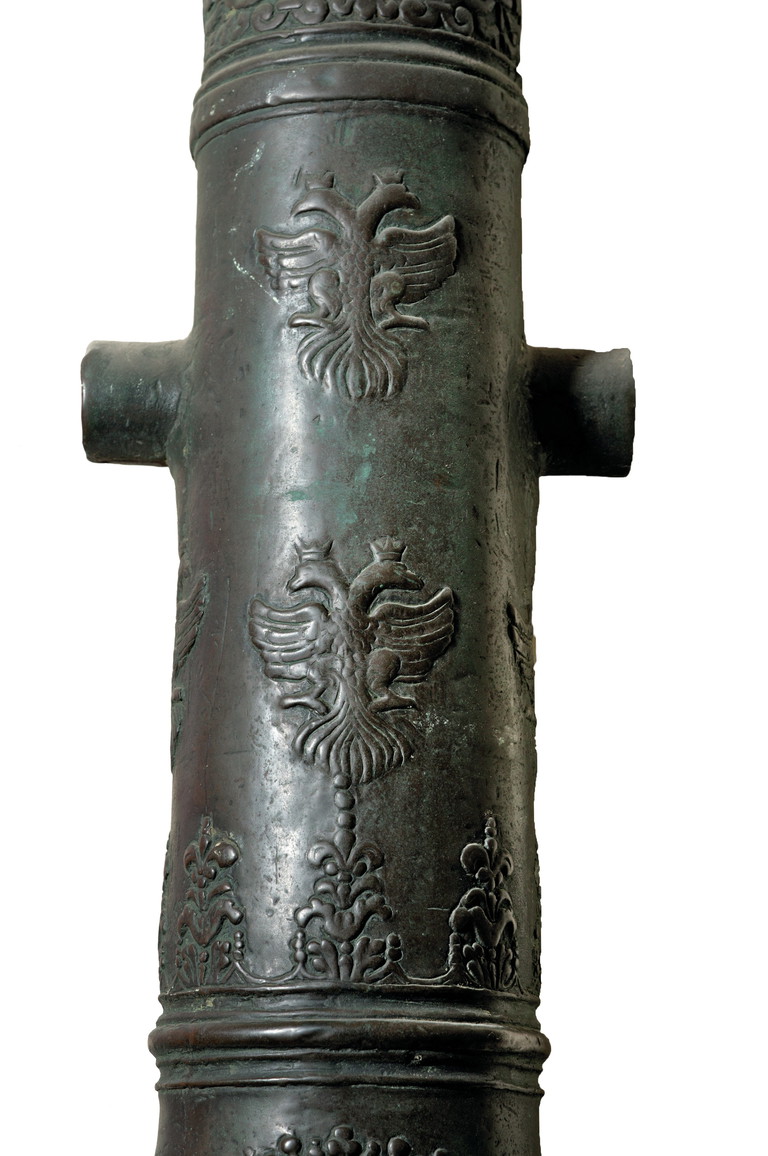
The Lascaris Galley cannon
The fondazione that provided cannon to Order
Grand Master Alof de Wignacourt (1601-1622) had finally solved the problem of acquiring a bronze cannon for the Order by erecting a foundry at Valletta, commonly referred to as the Funderia. The Flemish Bastainao Vos was engaged as the first master founder working at least from 1607 up to 1620.
In 1620, the Italian (possibly Roman) Vincenzo Sardo (or Sardi) took over as master founder until 1671, with a career spanning over 50 years. One grand master after the other invested and ushered benevolence upon the military infrastructure of the island. Grand Master Jean Paul Lascaris de Castellar (1636-1657) was eager to follow in the footsteps of Alof de Wignacourt. He set up a galley foundation to properly maintain and equip one of the Order’s galleys. The fleet needed a sustainable financial structure to maintain galleys. A bronze cannon at the Malta Maritime Museum dated 1655 cast during Vincenzo Sardo’s tenure of office is testament to Lascaris’s endeavours to strengthen the Order’s fleet.
This cannon is richly decorated with the Lascaris emblem of the double-headed crowned eagle all around the first reinforce (except for the front), the second reinforce and on the chase. Running festoons and arabesque designs decorate the muzzle and reinforcements. On the first reinforce face, the crowned Grand Master Lascaris coat of arms takes pride of place and underneath a framed legend runs as follows::
M. MAG. LASCARIS AD
VSVM TRIREMIS SVAE,
FVND ME F.F. 1655
For posterity, the grand master wanted to record thus his munificence and the setting up of the Lascaris galley foundation. It should be noted that said galley foundation paid for the building, upkeep and equipment of just one galley, later on referred to as the Lascara galley, and not for the entire Order’s fleet.
The Lascaris galley foundation was not the only such foundation. By 1700, building and maintaining a galley hull alone cost the Order of St. John an average of 1,050 scudi. At the time, the Order had seven galleys in its fleet. As early as 1598, foundations for the rebuilding of galleys were set up to guarantee a steady amount of funds to construct new galleys to replace older units. After eight years, a galley was considered to be no longer seaworthy for active naval service because of weathering and constant repairs.
Five knights and two Grand Masters contributed substantially for the building of galleys and set up foundations to guarantee funds for this purpose. In all, seven foundations were established each to construct a galley hull and/or even to fully equip it. Various clauses in these foundations stipulated conditions, for example that the name of the foundation had to be legible on the new galley in a prominent place, normally on the dragant. The foundations were named after their patron and set up as follows:
Knight Claramonte galley foundation, established in 1598
Knight Lussan galley foundation, established in 1614
Knight Gaillarbois galley foundation, established in 1631
Grand Master De Paule galley foundation, established in 1631
Knight Ventimiglia galley foundation, established in 1631
Knight Cavaretta galley foundation, established in 1636
Grand Master Lascaris galley foundation, established in 1651
Notwithstanding these foundations, rising costs still created problems in building and maintaining the galley fleet. Over time and especially after the inception of the ships of the line squadron in 1700, some of these foundations were merged and thus offered a steady income for the Order’s galley squadron, which was reduced to five galleys in 1704.
